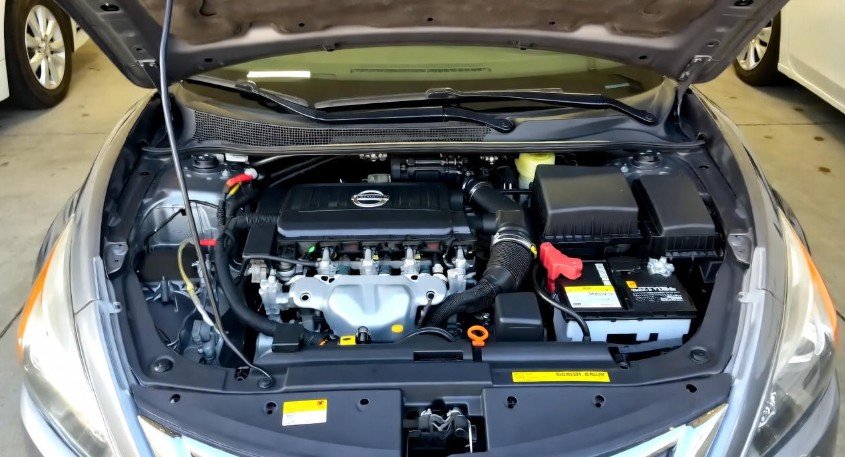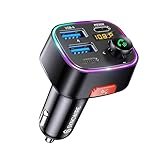How to Check Transmission Fluid on Nissan Altima: Expert Guide

Caring for your car keeps you confident on the road. When you drive a Nissan Altima, you expect smooth gear changes and a calm ride. That smooth feeling comes from a key part of your car. It is the transmission fluid. It keeps the transmission cool and lets gears shift without delay. You do not need to be a mechanic to keep this part healthy. You can check transmission fluid on Nissan Altima at home. It takes only a few minutes and can protect you from big repair bills.
I remember when a friend bought a used Altima. It drove well at first, then the gears became slow to shift. He thought the transmission was failing. The real issue was very simple. The transmission fluid was low. One quick check, a small refill, and the car felt new again. This guide gives you the same peace of mind. You learn simple steps that keep your vehicle strong and safe.
This article gives expert insight and personal guidance. You get clear steps and friendly advice from real experience. You also learn why this task matters for your daily driving and long term savings.
Make sure to look out for bold words. These are your key terms for smart car care. Let us explore each detail with calm and simple language.
Why Your Transmission Fluid Matters
Your transmission works all the time while you drive. Gears move fast. Heat builds. Without clean fluid, metal grinds and wears out. That can lead to major stress, rough gear shifts, or total breakdown. The transmission fluid does many jobs at once.
Here is what it does:
• It reduces friction
• It cools parts inside the transmission
• It helps smooth gear shifts
• It protects against rust and dirt
• It supports long lasting performance
If your fluid level gets too low, your vehicle may show warning signs. You might hear odd sounds. You might feel shaking while shifting. You might notice a delay when you switch into Drive or Reverse. These tiny signs can become expensive problems. When you check transmission fluid on Nissan Altima, you find issues before they grow.
Taking five minutes can save thousands later.
What You Need Before You Check
You do not need fancy tools. Anyone can do this with a few simple items. You can even use things found in your kitchen or glove box.
You will need:
• A clean rag or paper towel
• A funnel made for automotive use
• Safety gloves
• Safety glasses
• A flat parking spot
It also helps to have patience. You want an accurate check. That means your engine needs to warm up first.
Here is a quick table to help:
| Item | Purpose |
|---|---|
| Clean rag | Wipe dipstick clean |
| Funnel | Add fluid without spilling |
| Gloves | Protect your hands |
| Flat surface | Correct fluid measurement |
| Warm engine | Shows real fluid level |
These small steps make a big difference. They show you care about your Nissan Altima and yourself.
Getting Ready for the Fluid Check
Park your car on level ground. Keep the engine running. Make sure your car is in Park. Use the parking brake. Let your engine warm for 5 to 10 minutes. Warm fluid expands to its normal level. That gives you a correct reading. Checking cold fluid can show a false low level.
Open the hood. You might feel nervous the first time. That is okay. Every expert started with that same nervous feeling. Take a deep breath. Enjoy the chance to learn something useful.
Look around the engine bay. You will find lots of parts but only one part right now matters. The transmission dipstick.
How to Locate the Transmission Dipstick
Some Altima models have a dipstick for easy checking. Many newer CVT models do not include a dipstick for owners. Those versions require a mechanic to check levels. Before you start, check your owner’s manual to confirm if your model has one.
If your Altima has a dipstick, it sits close to the back of the engine. The handle is often yellow or red to be easy to notice. It should be clearly marked like ATF or Transmission.
Trust your eyes and look slow. Once you find it, smile. You just passed the hardest part.
If you cannot find it or feel unsure, do not worry. Asking a trained technician is smart. Caring drivers get help when needed. You are still making a strong choice for your car.
Measuring the Fluid Level Properly
Now that you found the dipstick, here comes the simple part.
Step by step:
-
Keep the engine running and the car in Park
-
Pull the dipstick out slowly
-
Wipe it clean with a rag
-
Insert it fully back into the tube
-
Pull it out again
-
Look at the level lines
The stick will show lines that say Low and Full. The fluid should be between them. If it sits low, you need a refill. That is what keeps the gears happy and smooth.
If you see bubbles or foaming on the stick, fluid may be too full. Too much is as bad as too little. Your transmission needs balance.
It feels good to check something yourself. You learn a moment of confidence. You learn to trust your care and attention.
What Healthy Transmission Fluid Looks Like
Your eyes and nose tell you a lot. You do not only check for level. You want quality.
A healthy CVT fluid has:
• Light reddish or pink color
• Soft sweet smell
• Smooth feel with no grit
If fluid looks dark, brown, or nearly black, that is a warning. Burnt smell is a warning too. That means your fluid may be old or overheating.
Grit or metal flakes show possible damage inside the transmission. You should get a professional to look at that.
Your senses protect your car. You know trouble when you see or smell it. When fluid looks clean, you get peace inside. You know your car is safe to drive.
What To Do If Transmission Fluid Is Low
Low fluid means your transmission is missing the support it needs. You must add more of the correct type. Nissan uses specific CVT fluid. Never use a random product from a store shelf. Wrong fluid can harm your transmission.
Here is how to refill:
-
Insert a funnel into the dipstick tube
-
Pour a small amount of the correct fluid
-
Wait a moment
-
Check level again
-
Stop when fluid reaches the Full mark
Slow and careful is the key. Adding too much is not helpful. In fact, it can cause overheating and force the transmission to work extra hard.
If you refill and the level drops again soon, that means there may be a leak. That still gives you some control. You found a problem early. Now a mechanic can fix it before major damage happens.
How to Spot a Transmission Fluid Leak
Leaks can come from many places. They start small. A wet spot under your parked car can be a clue. Transmission fluid is often reddish. If you see a puddle or small drip with that color, check soon.
Here are common leak spots:
• Transmission pan
• Seals along edges
• Cooling lines
• Axle area
Small leaks can be fixed fast. Big leaks cost more. Quick attention is the best way to save money. You are now becoming the type of driver who knows what is happening under the hood. That is smart and confident driving.
Understanding Fluid Quality and When to Replace It
Transmission fluid does not last forever. Even if levels are correct, old fluid can lose its properties. Checking the fluid regularly helps you determine if a fluid change or flush is necessary. For a Nissan Altima, CVT fluid typically lasts 60,000–100,000 miles, but this varies depending on driving conditions.
Signs that you may need a fluid replacement include:
-
Dark or brown fluid
-
Burnt or unusual odor
-
Gritty or sludgy texture
-
Rough or delayed gear shifts
Replacing old fluid restores proper lubrication and cooling. It can prevent slipping, overheating, or permanent transmission damage. Some drivers ignore these signs until a problem becomes expensive. By inspecting fluid consistently, you stay proactive, which protects your Altima and your wallet.
Dealing With Overfilled Transmission Fluid
Overfilling the transmission fluid is as harmful as having too little. Excess fluid can foam and cause air pockets. This reduces the ability of the transmission to lubricate properly, leading to overheating and erratic shifting.
If your dipstick shows fluid above the Full line:
-
Use a clean pump or turkey baster to remove excess fluid
-
Recheck the level after each removal
-
Avoid draining too much; the level should fall between Low and Full
Ignoring overfilled fluid can lead to costly repairs. It may cause seals to fail or the transmission to overheat. Taking careful corrective action immediately is essential for the long-term health of your Nissan Altima.
Common Mistakes to Avoid
Even experienced car owners make mistakes when checking transmission fluid. Avoid these errors:
-
Checking fluid with a cold engine – this gives inaccurate levels
-
Using the wrong type of transmission fluid – this can damage your CVT
-
Ignoring color, smell, or texture – these indicate health issues
-
Overfilling or underfilling – both can harm performance
-
Not addressing persistent leaks promptly
Keeping a checklist each time you inspect fluid can prevent these mistakes. A small habit change can save thousands in repairs.
When to Seek Professional Help
Sometimes, checking the transmission fluid reveals something beyond your control. Here are signs to call a professional:
-
Fluid looks burnt or contaminated
-
Leaks continue even after topping off
-
Transmission makes strange noises or shifts roughly
-
Fluid keeps dropping repeatedly
Mechanics can inspect the transmission, replace faulty seals, and ensure that your CVT is performing optimally. Asking for help is not failure—it is smart maintenance. Your Nissan Altima benefits, and you save stress and money over the long run.
Benefits of Regular Transmission Fluid Checks
By performing routine checks, you gain more than just peace of mind. The benefits include:
-
Extended transmission life – less wear and tear
-
Smoother gear shifts – no more jerky motions
-
Better fuel efficiency – less energy lost to friction
-
Lower repair costs – early detection prevents major problems
Think of checking fluid like brushing your teeth. Small, regular actions prevent big problems later. Skipping it only leads to pain and cost.
Tips for Long-Term Transmission Health
Here are practical habits to protect your Altima’s transmission:
-
Warm up your engine for a few minutes before driving
-
Avoid aggressive shifting or harsh driving
-
Check fluid every 3,000–5,000 miles or as recommended in your owner’s manual
-
Use only manufacturer-approved CVT fluid
-
Keep an eye on the fluid’s color and smell
Simple attention every few months can prevent years of headaches. Your car will feel responsive, and you’ll enjoy stress-free driving.
Frequently Asked Questions (FAQs)
1. How often should I check transmission fluid on a Nissan Altima?
Check at least once a month or every 3,000–5,000 miles. CVT transmissions are sensitive, so regular checks prevent damage.
2. Can I check transmission fluid with a cold engine?
It is best to check when the engine is warm. Cold readings may appear lower than actual levels.
3. What type of transmission fluid does my Altima need?
Use only Nissan-approved CVT fluid. Using the wrong type can cause slipping or overheating.
4. What if the fluid looks dark or smells burnt?
This indicates the fluid is old or overheating. Schedule a replacement immediately.
5. Can I fix low transmission fluid myself?
Yes, if you use the correct fluid and a clean funnel. Be careful not to overfill.
6. How do I know if I have a leak?
Look for reddish puddles under the car, drops around seals, or repeated low fluid levels.
7. Is overfilled fluid dangerous?
Yes. It can foam, overheat the transmission, and damage seals. Always drain excess carefully.
8. When should I seek a mechanic’s help?
If you notice burnt fluid, continuous leaks, rough shifting, or repeated low levels, a professional inspection is necessary.
Conclusion
Knowing how to check transmission fluid on Nissan Altima is a small effort that pays off immensely. It protects your vehicle, ensures smooth driving, and avoids costly repairs. By following this guide, you can confidently check fluid levels, assess quality, top up when needed, and detect issues early.
Remember: your transmission is the heart of your car’s smooth operation. Treat it with care. Take a few minutes each month to check the fluid. Warm up the engine, inspect the dipstick, and observe the fluid’s color, smell, and texture. Address low or overfilled levels carefully, watch for leaks, and replace fluid as recommended.
Regular attention keeps your Nissan Altima reliable and enjoyable for years. In short, a small routine check today means fewer worries, safer rides, and longer-lasting transmission performance tomorrow. Keep your Altima running smoothly, one fluid check at a time.





